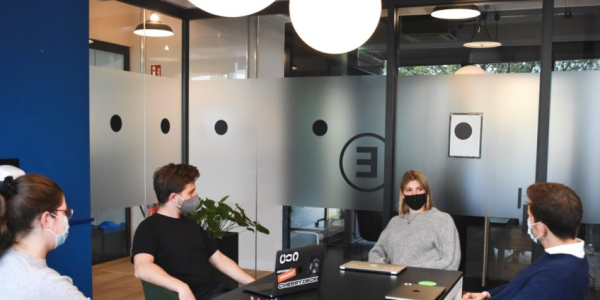The issue of Period Leave (“PL”) has stoked a lively conversation on Twitter, LinkedIn, and other popular social media platforms after Zomato broke the internet with its progressive announcement. But many people are not participating in it, preferring to watch from the sidelines. Had they not been feeling awkward, they would have probably engaged in the erupting debate, maybe even changing the course of history in the making. When firms pioneer adopting a new policy on inclusion, be it for women, for LGBT, for ethnic minorities, they make history. But firms consist of people, and their voices count.
Is the policy of giving PL a Bold Step?
Zomato, a Foodtech unicorn, has taken a big and bold step of offering PL to their women and transgender employees. It is bold because many firms will shy away from taking this big step towards inclusion. After all, 10 or 12 extra days of leave in a year, in a country where there are already too many festival leaves, Central government holidays, and State government holidays, are a loss of productivity. Businesses cannot survive if they don’t take care of the bottom-line. Conversations on inclusion are great, but organizations need to be profitable, lest they die their own death.
Do we have any happy precedents of PL?
To convince your team, you need precedents. If there are none, it is tough to create an understanding that a new concept will work. Luckily, there are quite a few companies that have already made this path-breaking move. Culture Machine, Gozoop, Chennai based Magzter, and Kerala Media Group Mathrubhumi have already implemented a PL policy. Interestingly, what’s common to all of these companies, besides PL, is that they are all media companies. Gozoop, a digital media firm, offers the option of WFH along with PL, leaving it to the women to decide whether they need the entire day off.
The ‘Menstruation Benefit Bill’ tabled by Ninong Ering, a Lok Sabha MP representing Arunachal Pradesh in 2018, triggered a widespread discussion on the need to have menstrual leave policy for working women. Many women rejected this Bill due to reasons stated further below.
Why is there resistance by corporates to give PL?
One of the biggest reasons given for resisting the approval of PL policy is that many women will use it as a crutch to take time out for other pending tasks. Can the same be said for sick leave? Not really! Sick leave usually requires the production of a medical certificate. This can dissuade employees from misusing sick leave. But it is not the case for PL.
Even though period pain or menstrual pain can be “as bad as having a heart attack” as per Prof. John Guillebaud, University College, London, it is not a sickness. Most women do not need to see a doctor. They learn to manage it themselves, with a hot pack, a warm bath, even a cup of green tea, or something more robust.
So, would it be easier to misuse the PL benefit? As per W&D, an intimate products firm that offers PL, they have 25 women employees, and only 8 or 10 have ever taken PL. They have trusted their women employees, and their trust has not been betrayed.
The question of “n” or how many days of PL?
Forward-thinking CEOs that we spoke to, say that it’s not a question of whether to give PL or not, but how many days to give as PL. Is ‘n’ a good enough number, or too many? Zomato, the current trendsetter, has given up to 10 days in a year, with not more than 1 day in a month.
What is the logic behind the no. 10?
10 is not a random number. It is calculated after adjusting for the probability of a woman having her periods on the weekend. Since most women have 14 menstrual cycles in a year, 10 is the number they can rightfully claim as PL, as per Zomato.
Will giving PL increase bias against women?
It is true that traditionally women have taken the roles of caregivers and not the bread-winners. For that and many other reasons, they have been at the receiving end of conscious and unconscious biases. Even Maternity Leave is a cause for prejudice. Which employer will sanction a paid maternity leave for 6 months, without cringing at it’s effect on the firm’s profits? Is it any wonder that the number of women hired is less due to this and other work biases?
Even forward-thinking women are against PL for this very reason. They do not want to be left out of hiring, decision making roles, promotions, and pay increments. This makes the subject of PL highly contentious, with people of all genders being on both sides of the fence.
If the controversy around giving PL was not enough, there is another one brewing parallelly.
Why is it called Period Leave or Menstrual Leave?
We should call a spade a spade, but not this spade. The stigma around PL prevents people from even naming it for what it is. Some are aghast at the name Period Leave, wanting to club it under sick leave or create a special term for it, imaginatively titled “Special Leave.”
Incidentally, Bihar has had special leave for women for two days per month since 1992, called ‘Special Casual Leave’, for “biological reasons.”
Zomato Chief Executive Officer Deepinder Goyal said in a note to his staff, “There should be no shame or stigma around it”. Probably that is why they didn’t shy away from calling it PL. The idea behind it is not just to offer relief to women who have painful periods. It is also to start a conversation around the stigma to overcome it.
Rainmaker Training specializes in workshops that help dispel unconscious biases against women and other minorities. Respect and Gender Bias are some of the many workshops that can help your employees get ready for the ‘new but not yet normal’ concept of Period Leave.
Let any firm be the torch-bearer of Period Leave; the important thing is that all firms endorse it.
Author: Sumali Nagarajan
DISCLAIMER – No information contained in this website may be reproduced, transmitted, or copied (other than for the purposes of fair dealing, as defined in the Copyright Act, 1957) without the express written permission of Rainmaker Online Training Solutions Pvt. Ltd.











